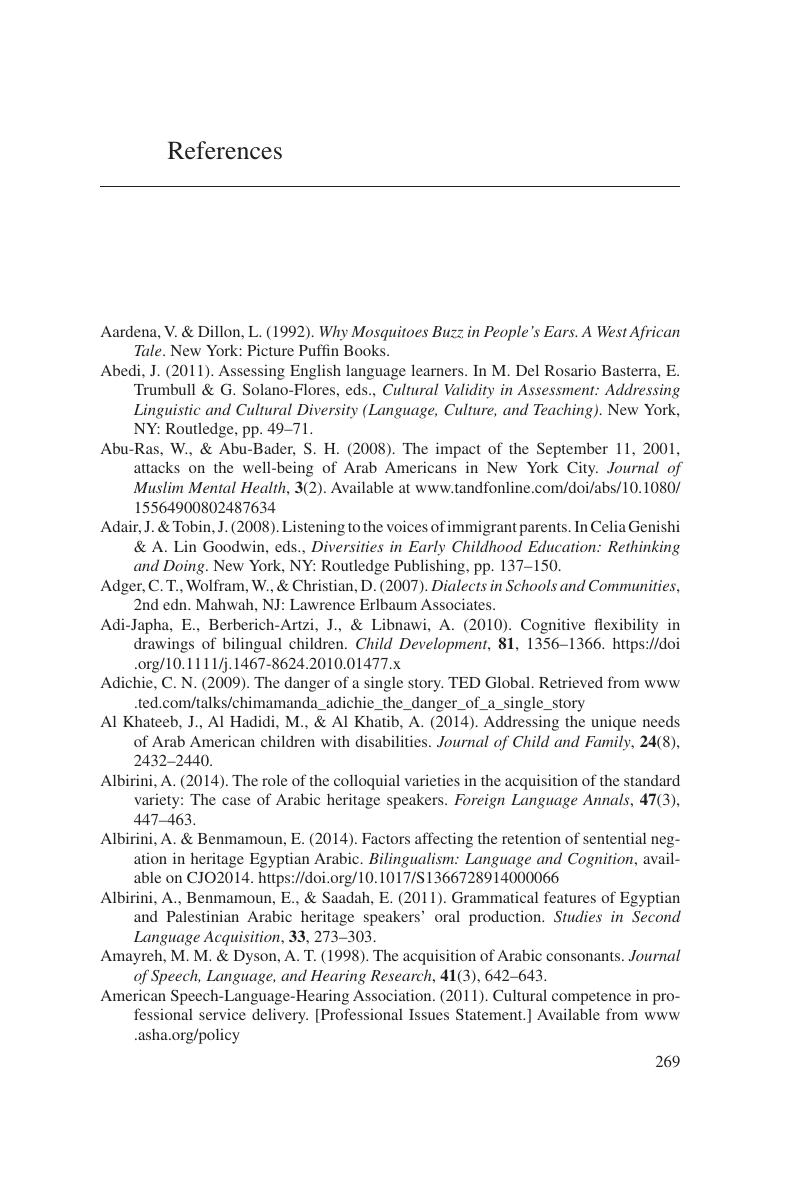Book contents
- Language, Culture, and Education
- Language, Culture, and Education
- Copyright page
- Dedication
- Contents
- Figures
- Tables
- Contributors
- Expanding Language and Ability Difference: A Foreword
- Acknowledgments
- Introduction to the Immigrant Experience
- Part I Immigration, Bilingual Education, Policy, and Educational Planning
- Part II Bilingualism, Literacy Ecologies, and Parental Engagement among Immigrant Families
- Part III Cultural Perceptions about Disability, the Home Language, and Healthcare Alternatives among Immigrants
- Epilogue
- References
- Index
- References
References
Published online by Cambridge University Press: 11 March 2019
- Language, Culture, and Education
- Language, Culture, and Education
- Copyright page
- Dedication
- Contents
- Figures
- Tables
- Contributors
- Expanding Language and Ability Difference: A Foreword
- Acknowledgments
- Introduction to the Immigrant Experience
- Part I Immigration, Bilingual Education, Policy, and Educational Planning
- Part II Bilingualism, Literacy Ecologies, and Parental Engagement among Immigrant Families
- Part III Cultural Perceptions about Disability, the Home Language, and Healthcare Alternatives among Immigrants
- Epilogue
- References
- Index
- References
Summary

- Type
- Chapter
- Information
- Language, Culture, and EducationChallenges of Diversity in the United States, pp. 269 - 302Publisher: Cambridge University PressPrint publication year: 2019

